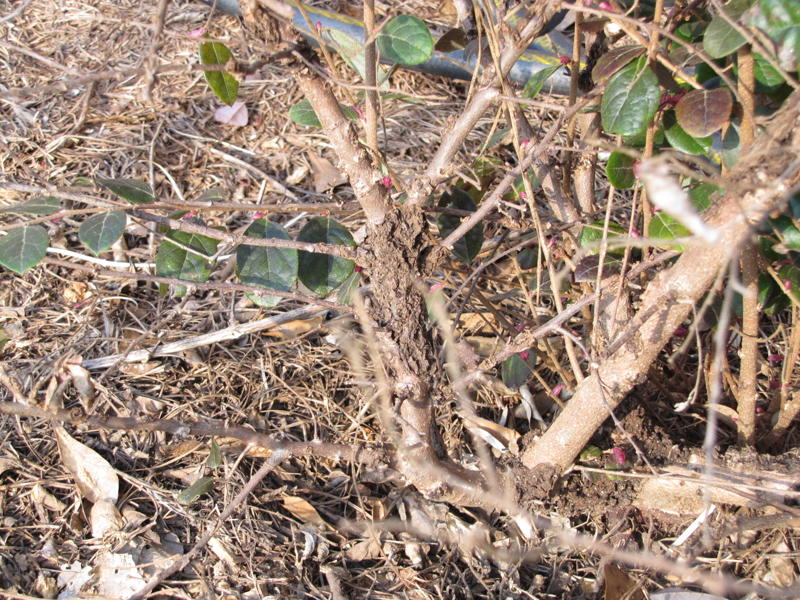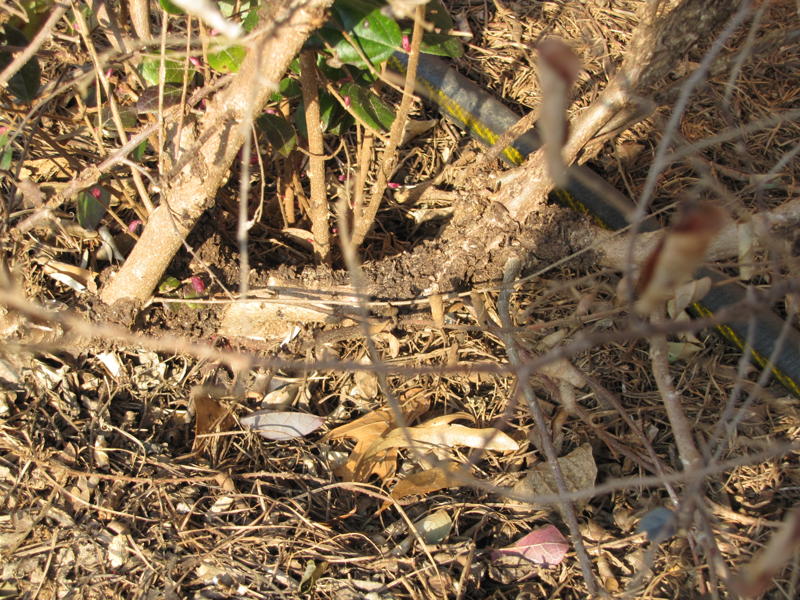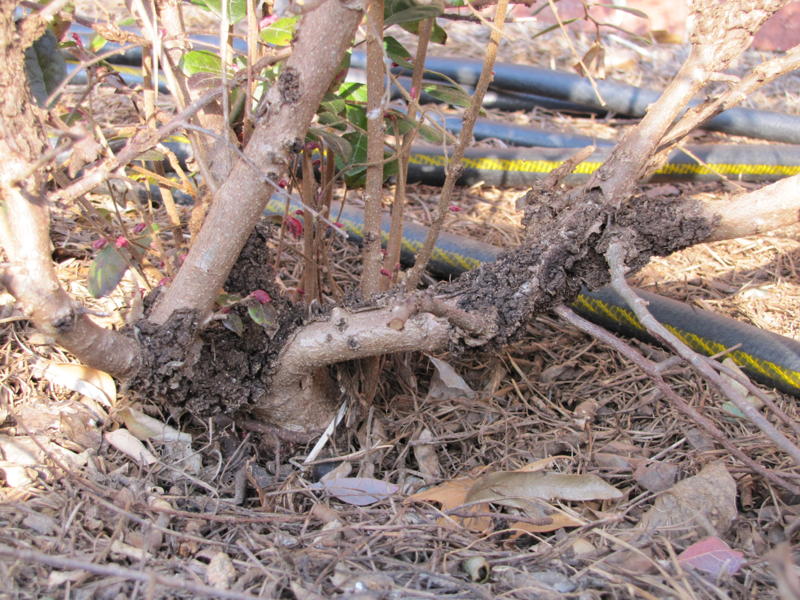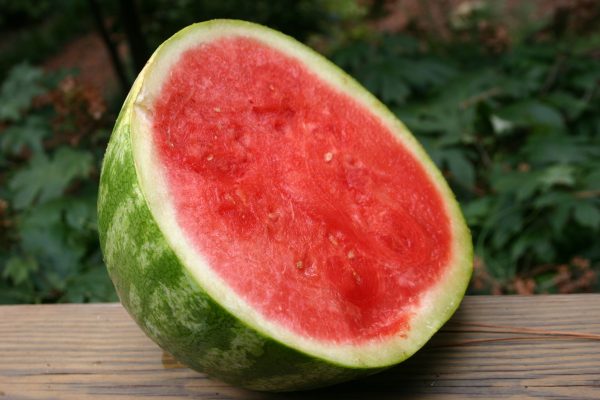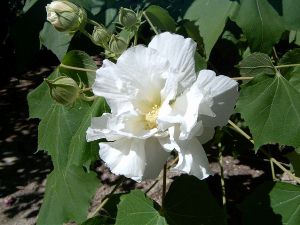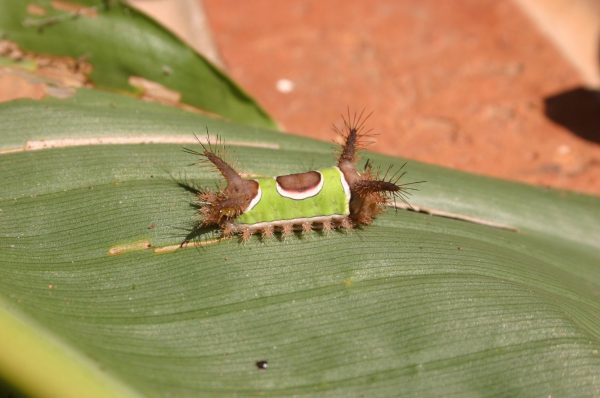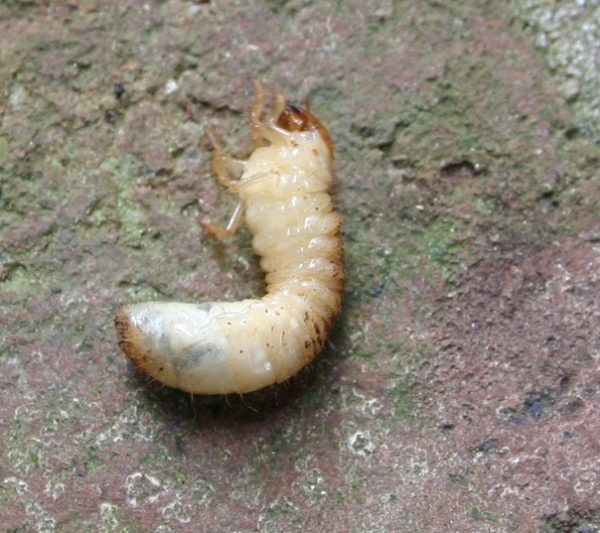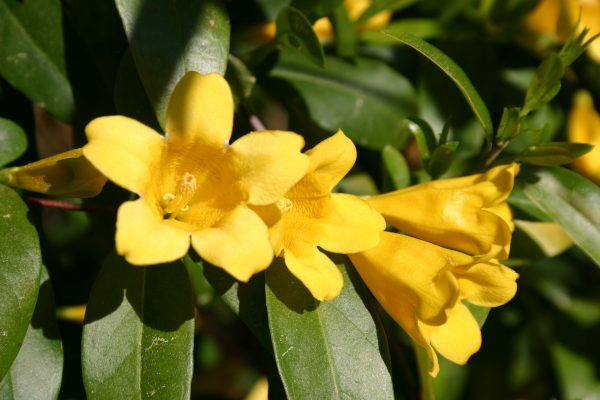Loropetalum – Bacterial Stem Gall

Q: In the summer of 2013, I lost 28 loropetalums to bacterial gall, diagnosed by the Extension pathology lab. I replanted loropetalums there in the spring of 2016. That winter all the leaves dropped, but in the spring of 2017 they came back. Once again in the winter of 2017 the leaves dropped but the leaves came back weakly this spring. Today I’m seeing evidence of the bacterial gall returning.
1. Is it possible for the bacteria Pseudomonas savastanoi to remain in the soil or residual roots from the dead plants? If so, could this be how the new plants got infected?
2. Or is it more likely that the new plants were infected from the nursery?
3. If the new plants do not survive, is there any shrub that could be planted in same location that would not be susceptible to the disease?
A: Yes, the disease can remain in the soil for quite a while. You’ll need to plant something that isn’t a carrier.
Small crapemyrtle, camellia or gardenia are options.
